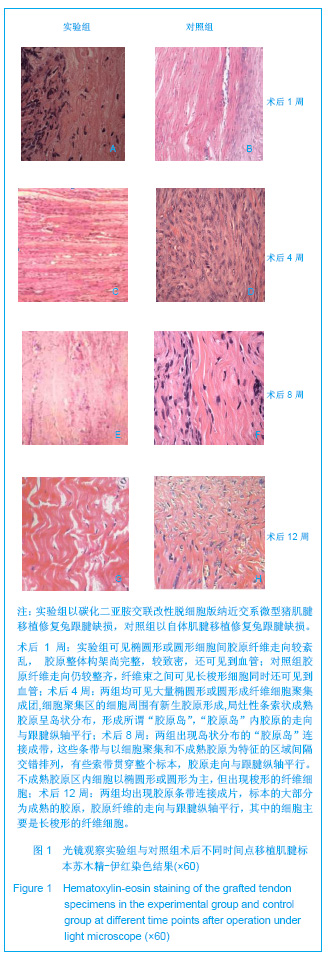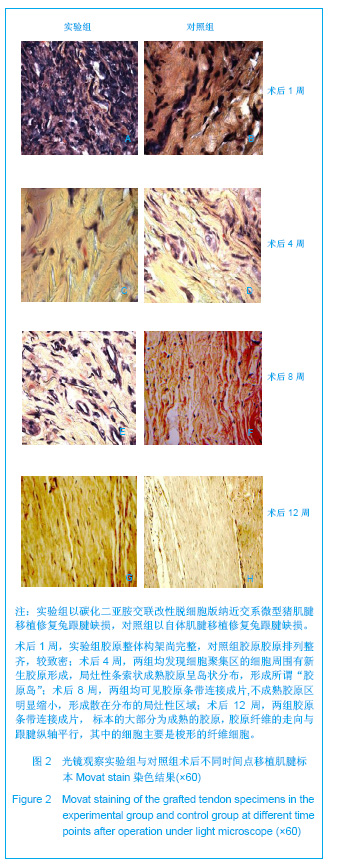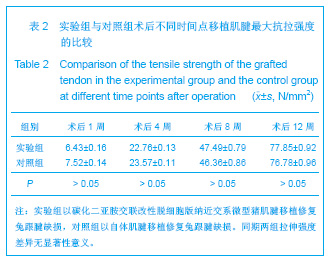中国组织工程研究 ›› 2013, Vol. 17 ›› Issue (12): 2153-2158.doi: 10.3969/j.issn.2095-4344.2013.12.009
• 材料生物相容性 material biocompatibility • 上一篇 下一篇
碳化二亚胺交联改性脱细胞异种猪肌腱修复跟腱缺损
靳宪辉1,高春光1,崔胜杰1,刘桂花1,杨建博1,林月秋2
- 1衡水市人民医院骨科,河北省衡水市 053000
2解放军昆明总医院全军骨科中心,云南省昆明市 650032
1-Ethy1-3-(3-dimethylaminopropy1)carbodiimide hydrochloride cross-linking xenogeneic porcine acellular tendon for repairing Achilles tendon injury
Jin Xian-hui1, Gao Chun-guang1, Cui Sheng-jie1, Liu Gui-hua1, Yang Jian-bo1, Lin Yue-qiu2
- 1 Department of Orthopedics, Hengshui People’s Hospital, Hengshui 053000, Hebei Province, China
2 The Army Orthopaedic Center, Kunming General Hospital of PLA, Kunming 650032, Yunan Province, China
摘要:
背景:异体肌腱移植是目前修复肌腱缺损的理想方法,但移植后的排斥反应使其使用受到限制。 目的:观察碳化二亚胺交联改性脱细胞处理的版纳近交系微型猪肌腱移植修复兔跟腱缺损的效果。 方法:横向切除40只日本大白兔双侧跟腱,随机分组:实验组以碳化二亚胺交联改性脱细胞版纳近交系微型猪肌腱移植修复,对照组以自体肌腱移植修复。 结果与结论:①组织学观察:两组新生组织内细胞主要都是单核的成纤维细胞和纤维细胞,术后1-4周主要是呈椭圆形或圆形的成纤维细胞,细胞聚集区的细胞周围有新生胶原形成,这些胶原的走向较紊乱;局灶性条索状成熟胶原呈岛状分布,形成所谓“胶原岛”;术后12周时细胞越来越拉长,成为梭形和长条形的纤维细胞。②实验室检测:两组白细胞、C-反应蛋白水平、羟脯氨酸含量及抗拉强度差异均无显著性意义。说明碳化二亚胺交联改性的脱细胞版纳近交系微型猪肌腱能成功修复兔跟腱缺损,且具有组织相容性好、移植排斥反应轻、生物力学性能强的优点。
中图分类号:




